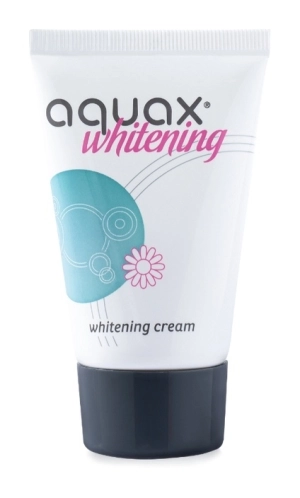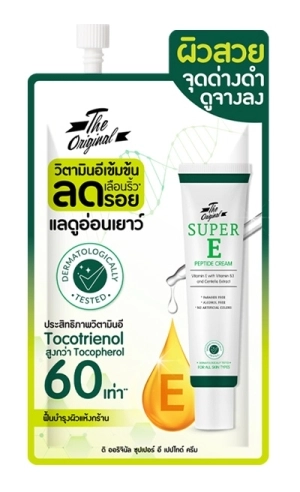Bha
BHA or Beta Hydroxy Acid, is a powerful ingredient commonly found in skincare products. It's particularly well-suited for oily, acne-prone skin due to its unique ability to penetrate deep within the pores. But what exactly are the benefits of BHA, and how can you incorporate it into your routine for optimal results? In this comprehensive guide, Chanh Beauty will delve into everything you need to know about BHA, from its properties and benefits to choosing the right product and using it safely.
What is BHA?

BHA stands for Beta Hydroxy Acid. It is a type of acid commonly used in skincare products as a chemical exfoliant. Unlike AHAs (alpha hydroxy acids) that work on the surface of the skin, BHAs can penetrate deeper into the pores to remove dead skin cells, dirt, and oil. This can help to reduce the appearance of acne, blackheads, and whiteheads. This makes it highly effective in:
- Dissolving sebum (oil) buildup: This prevents clogged pores, which can lead to blackheads and whiteheads.
- Exfoliating dead skin cells: This promotes cell turnover, revealing a brighter and smoother complexion.
- Reducing inflammation: BHA has mild anti-inflammatory properties that can help calm irritation and redness associated with acne.
Benefits of BHA for Skin

BHA offers a multitude of benefits for various skin concerns, particularly oily and acne-prone skin. Here's a closer look:
- Conquering Clogged Pores and Acne:
BHAs, with salicylic acid being the most common type, are oil-soluble. This unique property allows them to penetrate deep within your pores, dissolving the sebum (oil) and dead skin cells that can lead to breakouts. By keeping pores clear, BHAs effectively prevent new pimples from forming and reduce the appearance of existing ones.
- Beyond Acne: Minimizing Pores and Smoothing Texture
The gentle exfoliating power of BHAs extends beyond just fighting blemishes. They can help shed the layer of dead skin cells that contribute to rough, uneven texture. This results in a smoother, more refined appearance of your skin. Additionally, by reducing excess oil production, BHAs can minimize the appearance of enlarged pores, leaving you with a more balanced and youthful look.
- Fading Sun Damage and Fine Lines
While not their primary function, BHAs can also offer some anti-aging benefits. They may help stimulate collagen production, which plumps up the skin and reduces the appearance of fine lines and wrinkles. Additionally, BHAs can help fade hyperpigmentation caused by sun damage, leaving your skin with a more even tone.
- Suitable for a Range of Skin Types
Unlike AHAs (alpha hydroxy acids) which can be irritating for sensitive skin, BHAs are generally well-tolerated. This makes them a good option for those with oily, combination, or acne-prone skin. However, even with BHAs, it's important to start slow and introduce them gradually into your routine, especially if you have sensitive skin.
Side effects of BHA on skin
BHA (beta hydroxy acid) has become a superstar in the skincare world, lauded for its ability to combat acne, unclog pores, and even out skin tone. But like any powerful ingredient, BHA comes with some potential drawbacks.

Before you dive headfirst into a BHA routine, let's explore some of the things to consider:
- Dryness and Irritation
BHAs are exfoliants, which means they help remove dead skin cells. This can be great for clogged pores and acne, but it can also disrupt your skin's natural moisture barrier. This can lead to dryness, redness, and irritation, especially for those with sensitive skin.
- Sun Sensitivity
BHAs can make your skin more sensitive to the sun. This is because they can thin the outer layer of your skin, making it more susceptible to UV damage. Sunburn is more likely, and hyperpigmentation (dark spots) can develop. Always use sunscreen with SPF 30 or higher daily, especially when using BHA products.
- Over-exfoliation
It's tempting to go overboard with BHA products, especially if you see quick results. However, excessive exfoliation can damage your skin and worsen irritation. Start with a low concentration of BHA (around 1-2%) and use it only a few times a week. Gradually increase frequency and strength as your skin tolerates it.
- Mixing Mishap
BHAs can be wonderful companions to many skincare products, but some combinations can be problematic. Avoid mixing BHA with other strong exfoliants like AHAs (alpha hydroxy acids) or retinol at the same time. This can lead to intense irritation. If you want to use both, alternate days or wait at least 30 minutes between applications.
The difference between BHA and AHA
AHAs and BHAs are both common ingredients in skincare products, but they target different concerns and work in different ways:
Here's a table summarizing the key differences:
| Feature | AHA | BHA |
|---|---|---|
| Solubility | Water-soluble | Oil-soluble |
| Targets | Skin surface, sun damage, wrinkles, hyperpigmentation | Pores, acne, oily skin |
| Common Acids | Glycolic acid, Lactic acid | Salicylic acid |
Beginner's Guide to BHA
Understanding how to incorporate BHA into your skincare routine can be transformative for achieving clearer, smoother skin. Whether you're new to chemical exfoliants or looking to refine your approach, starting with the basics is crucial. In the following section, "Beginner's Guide to BHA," we'll cover everything you need to know to get started safely and effectively.
Choosing the Right BHA Concentration
BHA (beta hydroxy acid) comes in various concentrations, typically ranging from 1% to 5%. Choosing the right strength for your skin is crucial to avoid irritation and maximize benefits. Here's a guide to help you pick the perfect BHA concentration:
BHA 1%: This is the lowest concentration, suitable for individuals with sensitive skin or those new to incorporating BHA into their skincare routine.
BHA 2%: This is an ideal concentration for most skin types. While it may cause a slight tingling sensation initially, this usually subsides as the skin adapts to the product.
BHA 4%: This concentration is recommended for healthy, normal skin and should be used only 1-2 times per week.
BHA 10%: This high concentration is typically found in targeted treatment products and should be applied solely to areas that require improvement.
Instructions for effective use
To get the most out of your BHA product, it's essential to follow proper application techniques and timing. Using BHA correctly can significantly enhance its effectiveness, promoting clearer and smoother skin. Here's a step-by-step guide to incorporating BHA into your skincare routine:

Step 1: Cleanse Your Face with a gentle, non-comedogenic cleanser.
Step 2: Apply BHA
- Product Choice: Select a BHA product that suits your skin type and concerns. Concentrations typically range from 1% to 10%, with lower strengths recommended for sensitive skin and higher strengths for oily or acne-prone skin.
- Application Method: Apply a small amount of the BHA product to your fingertips or a cotton pad. Avoid the delicate eye area and lips.
- Coverage: Gently spread the BHA product evenly over your entire face, including the neck and décolletage if desired.
Step 3: After the BHA has fully absorbed, follow with a hydrating moisturizer.
Additional Tips
Now that you've incorporated BHA into your routine, here are some additional tips to maximize its effectiveness
Start Slowly: If you're new to BHA, start by using it once or twice a week, gradually increasing the frequency as your skin tolerates it.
Patch Test: Before applying BHA to your entire face, perform a patch test on a small area of your skin, such as behind your ear or jawline, to check for any reactions.
Sun Protection: BHA can make your skin more sun-sensitive. Always wear a broad-spectrum sunscreen with SPF 30 or higher during the day, even on cloudy days.
Listen to Your Skin: Pay attention to how your skin responds to the BHA. If you experience any irritation, such as redness, dryness, or excessive tingling, reduce the frequency of use or consult a dermatologist.
Correct order of using BHA in the skincare process: Makeup remover -> Face wash -> Toner -> BHA -> Gentle moisturizer -> Sunscreen.
Frequently Asked Questions
What skin types are BHAs good for?
BHAs are generally well-tolerated by most skin types, especially oily and acne-prone skin. However, they might be too harsh for sensitive skin.
What concentration of BHA should I use?
The ideal BHA concentration depends on your skin type:
- Sensitive skin: Start with a low concentration (1-2%).
- Normal skin: 2-4% concentration is a good starting point.
- Oily or acne-prone skin: You might consider a higher concentration (up to 5%).
It's always best to start with a lower concentration and gradually increase it as your skin adjusts.
How often should I use BHA?
For most people, using BHA (beta hydroxy acid) 2-3 times per week is effective. However, if your skin tolerates it well, you can gradually increase to daily use. Always start with a lower frequency to see how your skin reacts and adjust accordingly.
Can I use BHA with other skincare products?
You can use BHA with other skincare products, but there are some things to keep in mind:
- Avoid mixing it with other exfoliating acids or retinol
- While BHA and vitamin C can both be beneficial for your skin, they can potentially interfere with each other if used together. If you want to use both, it's best to use them at different times of the day.
Why should we use BHA in skincare?
BHA is a versatile and effective skincare ingredient that offers a multitude of benefits for various skin types. Its gentle exfoliating, deep pore cleansing, and anti-inflammatory properties make it an ideal choice for achieving clearer, healthier, and more radiant skin.
How long does it take for BHA to be effective?
It usually takes about 6 - 8 weeks to achieve maximum results when using products containing BHA. If after 3 months of use there are no results, you should change to another product to avoid unwanted effects.
Does BHA purge?
Yes, BHA (beta hydroxy acid), most commonly known as salicylic acid, can cause purging. Purging is a temporary increase in breakouts that can happen when you start using a new exfoliating product, like BHA.

How long after using BHA should I apply moisturizer?
In most cases, you don't need to wait at all between applying BHA and moisturizer!
While some advice suggests waiting 20-30 minutes, many skincare experts recommend applying moisturizer right after your BHA. This helps counteract any potential dryness BHA might cause and ensures the moisturizer penetrates effectively.
Is BHA good for exfoliating?
It can be an effective way to exfoliate your skin, especially if you have oily or acne-prone skin. However, it's always a good idea to consult with a dermatologist before starting any new skincare product, especially if you have sensitive skin or any other skin concerns.
Can pregnancy use BHA?
Pregnant women are generally advised to avoid using BHA (beta hydroxy acid), specifically salicylic acid, in high concentrations due to potential risks. It's best to consult a healthcare provider for personalized advice.
With its unique ability to combat blemishes and promote cell turnover, BHA can be a powerful ally in your quest for clearer, smoother skin. Remember to start slow, listen to your skin, and incorporate BHA into a well-rounded skincare routine. By following these steps and using the right BHA product, you can experience the transformative benefits of this ingredient.















